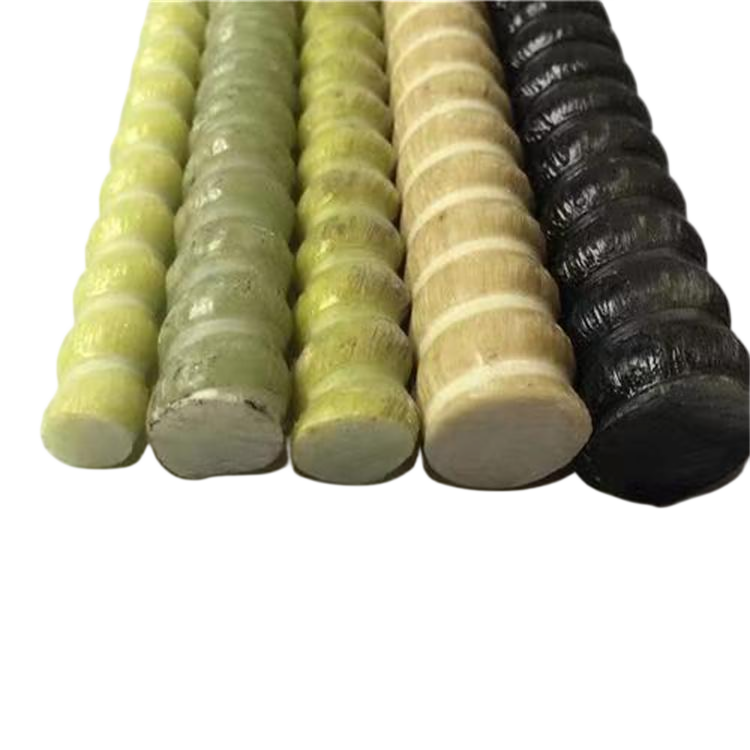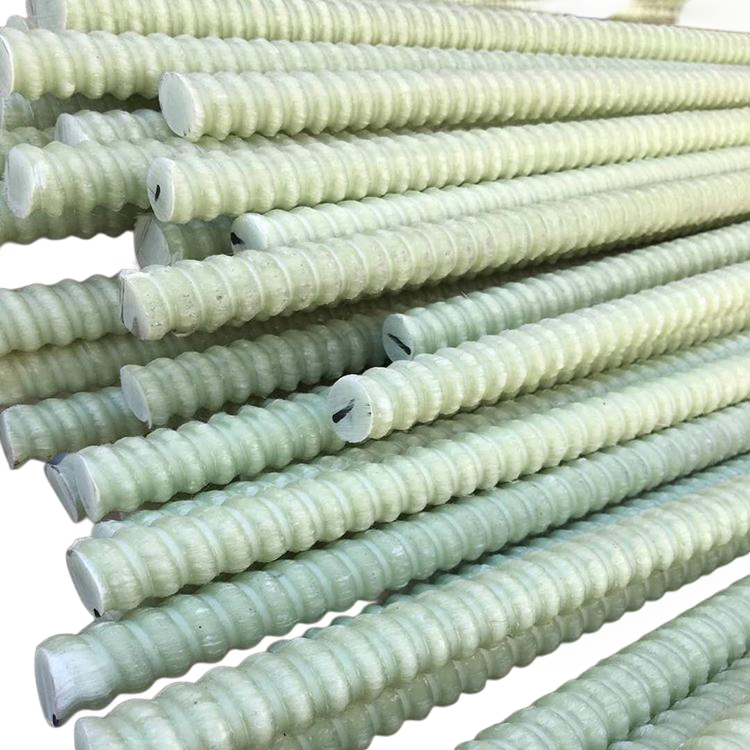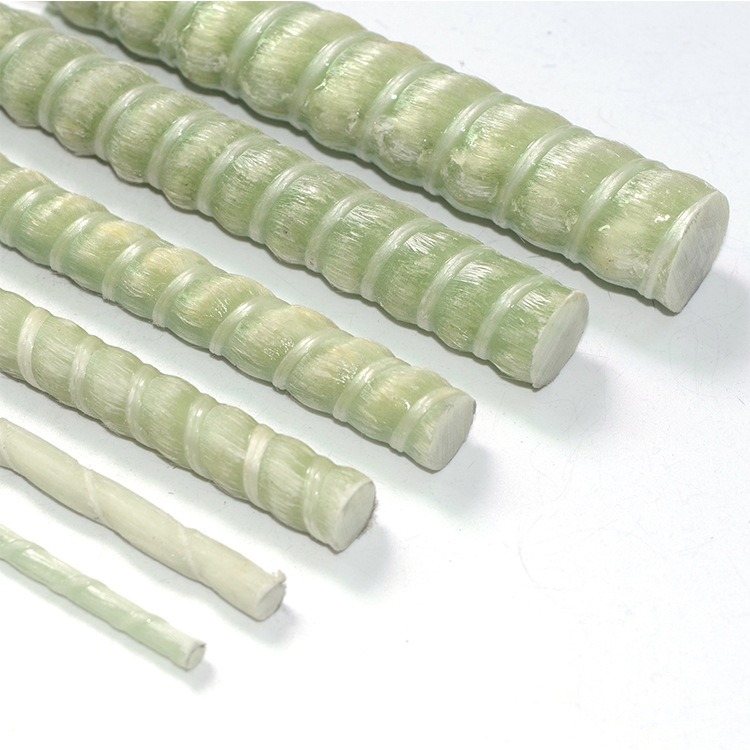Introduction
The manufacturing of Glass Fiber Anchor Cable has gained significant attention in recent years due to its superior properties and applications in various engineering fields. As industries seek materials that offer high strength, corrosion resistance, and lightweight characteristics, understanding the production process of glass fiber anchor cables becomes crucial. This article delves into the intricate manufacturing procedures, highlighting the technological advancements and quality control measures that ensure optimal performance of these cables in demanding environments.
Raw Materials Selection
The foundation of any high-quality glass fiber anchor cable lies in the careful selection of raw materials. The primary component is E-glass fiber, known for its excellent electrical insulation and mechanical properties. E-glass fibers are chosen for their high tensile strength and durability, which are essential for the anchor cable's performance in structural applications. Additionally, resins such as epoxy, polyester, or vinyl ester act as binding agents, providing the necessary matrix to hold the fibers together. The choice of resin significantly influences the cable's resistance to environmental factors like moisture and chemical exposure.
Fiber Preprocessing
Before the fibers can be used in cable manufacturing, they undergo preprocessing steps to enhance their compatibility with the resin matrix. This includes surface treatments and sizing applications that improve adhesion between the fibers and the resin. The fibers are treated with coupling agents to create a chemical bond, enhancing load transfer efficiency within the composite structure. Proper preprocessing ensures that the final product exhibits superior mechanical properties and longevity.
Pultrusion Process
The primary method for manufacturing glass fiber anchor cables is the pultrusion process. Pultrusion is a continuous production technique where fibers are impregnated with resin and pulled through a heated die to cure the composite material into a specific shape. This process offers several advantages:
- Consistency in cross-sectional dimensions
- High production efficiency and speed
- Superior mechanical properties due to unidirectional fiber alignment
During pultrusion, continuous strands of glass fibers are unwound from creels and guided through a resin bath, ensuring thorough impregnation. The wet fibers then pass through a pre-forming guide where excess resin is removed, and fibers are shaped before entering the heated die. The die's temperature is carefully controlled to initiate polymerization without degrading the fibers. Upon exiting the die, the cured composite is cooled and cut to the desired length.
Resin Injection and Curing
An alternative to the traditional resin bath is the resin injection method, which injects resin directly into the fiber bundle before it enters the die. This approach reduces resin waste and improves the wetting efficiency of the fibers. The curing process within the heated die is critical, as it determines the cable's final mechanical properties. Precise control of temperature profiles ensures complete curing of the resin matrix, resulting in a composite with optimal strength and durability.
Surface Treatment and Coatings
Post-curing, the glass fiber anchor cables may undergo surface treatments to enhance their performance. Sand coating is a common method where sand particles are embedded onto the cable surface to improve bonding with concrete or grout in construction applications. This mechanical interlocking enhances load transfer between the cable and the surrounding material, increasing the overall structural integrity. Additionally, protective coatings may be applied to shield the cable from UV radiation, moisture, and chemical exposure, thereby extending its service life.
Quality Control Measures
Ensuring the quality of Glass Fiber Anchor Cable involves rigorous testing and inspection at various production stages. Mechanical tests, such as tensile strength, shear strength, and fatigue resistance, are conducted to verify that the cables meet industry standards. Non-destructive evaluation techniques, like ultrasonic testing and visual inspections, detect any defects or inconsistencies in the composite structure. Implementing comprehensive quality control protocols ensures reliability and safety in the cable's applications.
Advancements in Manufacturing Technologies
Recent technological advancements have improved the manufacturing process of glass fiber anchor cables. Automation and computer-controlled pultrusion systems enhance precision and repeatability, reducing production errors. Innovations in resin chemistry, such as the development of fast-curing and high-temperature resins, have increased production speeds and expanded the operational environments of the cables. Furthermore, hybrid composites incorporating additional materials like carbon fibers can be produced to tailor properties for specialized applications.
Environmental and Economic Considerations
The manufacturing process also considers environmental impacts and economic efficiency. Utilizing eco-friendly resins and recycling waste materials reduce the environmental footprint of production. Energy-efficient curing processes and waste minimization strategies contribute to cost savings, making glass fiber anchor cables a competitive alternative to traditional materials. The lightweight nature of the cables also reduces transportation costs and facilitates easier handling during installation.
Applications and Case Studies
Glass fiber anchor cables are widely used in civil engineering projects, including bridge construction, tunneling, and slope stabilization. For instance, their non-corrosive properties make them ideal for marine environments where steel cables would deteriorate rapidly. A notable case is the use of glass fiber anchor cables in the reinforcement of coastal retaining walls, where they have demonstrated superior longevity and performance. Their electromagnetic neutrality also makes them suitable for use in structures sensitive to magnetic fields, such as certain laboratory and medical facilities.
Installation and Handling
Proper installation procedures are crucial to maximize the benefits of glass fiber anchor cables. Due to their high strength-to-weight ratio, they are easier to handle compared to steel cables, reducing labor requirements and installation time. However, care must be taken to prevent damage from excessive bending or abrasion during handling. Training for installation personnel on the specific characteristics and requirements of these cables ensures that they are installed correctly, maintaining the integrity of the composite material.
Future Trends and Developments
The future of glass fiber anchor cable manufacturing is poised for growth, with research focusing on improving material properties and production efficiencies. Nanotechnology is being explored to enhance resin matrices, leading to composites with even higher strength and durability. Additionally, sustainable manufacturing practices are being integrated, utilizing bio-based resins and fibers to produce environmentally friendly composite materials. As demand for advanced construction materials increases, manufacturers are investing in innovative technologies to stay competitive in the market.
Comparison with Traditional Materials
When compared to traditional steel anchor cables, glass fiber anchor cables offer several advantages. Their corrosion resistance eliminates the need for protective coatings and reduces maintenance costs over the structure's lifespan. The lower weight reduces the load on structures and simplifies transportation and installation. Despite a higher initial material cost, the total lifecycle cost of glass fiber anchor cables is often lower due to these savings. Studies have shown that in aggressive environments, the durability of glass fiber cables significantly outperforms that of steel, making them a prudent long-term investment.
Challenges and Solutions
Despite their benefits, challenges in manufacturing and utilization exist. One such challenge is the sensitivity of glass fibers to alkaline environments, which can be addressed by developing alkaline-resistant glass fibers or protective coatings. Ensuring consistent quality in large-scale production requires stringent process control and quality assurance protocols. Manufacturers are employing advanced monitoring systems and adopting international standards to mitigate these issues. Ongoing research and industry collaboration aim to overcome technical barriers and expand the applications of glass fiber anchor cables.
Regulatory Standards and Compliance
Compliance with regulatory standards is essential for the acceptance of glass fiber anchor cables in construction projects. Standards such as the American Society for Testing and Materials (ASTM) provide guidelines for material properties, testing methods, and performance criteria. Manufacturers must adhere to these standards to ensure their products meet the required safety and performance specifications. Certification from recognized bodies enhances credibility and facilitates the approval process in engineering designs and construction codes.
Educational and Training Initiatives
To promote the adoption of glass fiber anchor cables, educational initiatives are necessary to inform engineers, architects, and construction professionals about their benefits and proper use. Workshops, seminars, and collaboration with academic institutions help disseminate knowledge and best practices. Developing comprehensive training programs ensures that the workforce is skilled in handling and installing these advanced materials, leading to successful implementation in various projects.
Conclusion
The manufacturing process of glass fiber anchor cables is a complex integration of material science, engineering, and advanced manufacturing techniques. By understanding the intricacies of production, from raw material selection to quality control, stakeholders can appreciate the value these cables bring to modern construction and engineering projects. As technologies advance and industries seek sustainable and efficient solutions, the role of Glass Fiber Anchor Cable is set to expand, offering enhanced performance and longevity over traditional materials.




























